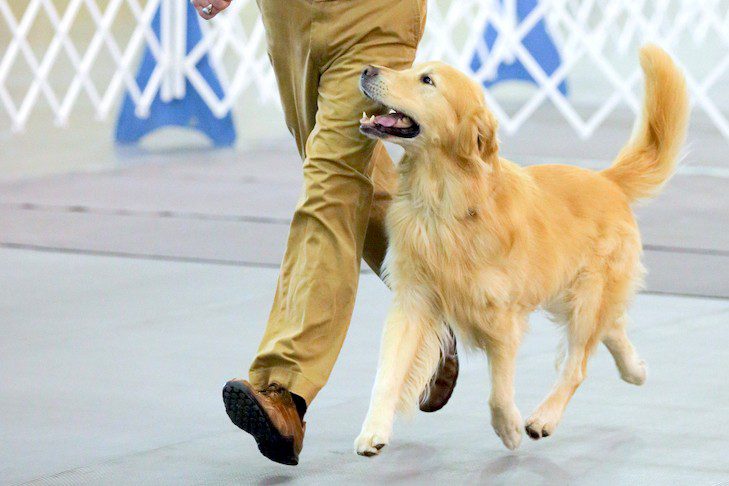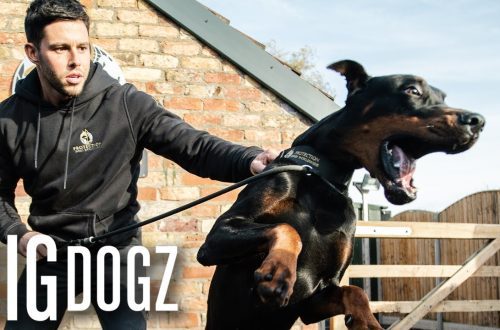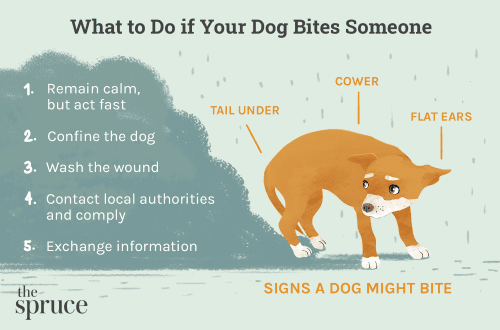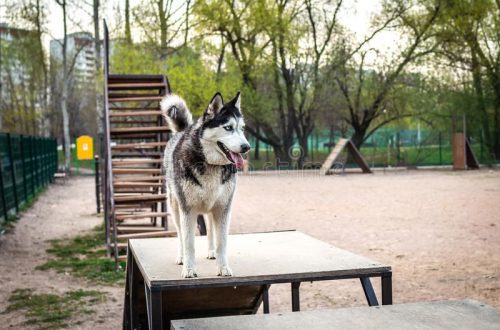
How to teach your dog the command “Next”?
A properly trained dog must adapt to the speed and pace of the person’s movement and change direction in sync with him. When the owner stops, the dog is supposed to immediately sit next to it. All this she must do on one command – “Next!”.
Such complex skills should be practiced by breaking them down into their component parts, so it will be easier for the pet to understand and master difficult behavior.
It’s good if by the time you decide to train your dog to move around, he will already be familiar with the basic stance, he will know how to properly behave on a leash and land. It is best to do it in a quiet place where nothing will distract the dog from the training process. Over time, when the pet begins to learn a new skill, you can change the place and train where there are distractions (for example, other dogs, cats or passers-by).
Contents
Step 1.
At the beginning of training, the pet should have an understanding of what he should do when the owner commands “Near!”. There are several ways to do this.
Pushing method
You will need a narrow collar, to which you need to fasten a medium-length leash. First you need to take the starting position: command “Next!” and get the dog to sit next to your left leg. It is necessary to make it clear to the dog that “Next!” means that she must not only take a position to the left of the owner, but also sit down if he is standing.
Pause briefly, then give the command “Close!”. And you need to do it loudly to be sure that the dog heard you. Start backing away, take just a couple of steps, tugging on the leash forcing the dog to get up and follow you, then command “Close!” and stop, forcing the dog to sit down. As soon as the dog does this, be sure to praise him with affectionate words, stroke or give him a couple of pieces of his favorite treat.
Pay attention to the term “pulling”: it does not mean pulling, but jerking the leash, reminiscent of a push. The force of the twitch should be enough to make the dog follow you.
Repeat the exercise described above 2-3 times. And on the next two repetitions, walk in a straight line not two, but four steps. Take a break and play with your dog. We will call the described cycle of exercises an approach. During a walk, you can do 10-20 such approaches.
As you learn, you need to increase the number of steps taken per set in general and between stops. But you should not rush.
Guidance method
In order for this method to be effective, the dog’s desire to enjoy delicious food or play must be very strong. You will need the same narrow collar and a medium-length leash as in the first method. Take the leash in your left hand, and a target in your right hand, which can be used as a treat or your dog’s favorite toy.
Take the starting position by commanding the dog “Next!” and forcing her to sit on your left. This can be done using the aiming method, i.e. moving the target from the dog’s nose up and back, or the “Sit!” command. If you use a command, then over time you need to use it less and less and finally stop using it completely. It is necessary that the dog understands: at the command “Next!” she should not only take a position to the left of the owner, but also sit down if he is standing.
Pause and give the command “Close!”, then present the target to the dog and take a couple of steps forward, dragging the dog along with the target. Again command “Close!”, stop, make the dog sit down. If you are targeting a treat, give the sitting dog a few bites of food. If you are working with a game target, then at first only praise the dog with affectionate words, and give her the toy after 2-3 repetitions of the exercise.
Otherwise, the principle of learning is the same as when using the pushing method. As you learn this skill, you should use targets less and less. If necessary, the dog’s behavior can be corrected with a leash.
The way of non-alternative behavior
This strange way lies in the fact that in the process of training such conditions are created in which the dog has no alternative, but there is only one possible form of behavior. This method was invented a very long time ago and was described back in 1931.
It is necessary to take the dog as close as possible to the collar and, having given the command “Near!”, lead it so that it is between the left leg and some obstacle, such as a fence or wall. Then the dog can only get ahead of the owner or lag behind him. It is necessary to align its course, making short jerks back or forward, each time commanding “Near!”. When working with a puppy, it is better to use praise and affection. If you are training a strong and stubborn dog, you can use a collar with spikes – parfors in training. In this case, you should follow your own path and pay no attention to her displeasure.
Over time, it is necessary to add variety to this exercise with frequent turns to the right, then to the left, as well as accelerating and slowing down the step. Once the pet learns to perform this exercise, you can move to an open space where there are other animals and people. You can also train your dog to walk beside you by walking along a raised edge of the sidewalk. It is necessary to walk along the road, keeping the dog on the left side, between you and the curb.
You should not use the method of non-alternative behavior for a long time. After 2-3 such sessions, move on to other training methods.
Stage 2. Change the pace of movement
When you have managed to get the dog to start moving without errors and resistance, sit down when you stop, and walk alongside at least 50 steps, you can switch to learning to change the pace of movement. To do this, moving at the usual speed, command “Next!” and go for an easy run. Strongly accelerate and rush is not worth it. A gaping or simply not having time to react dog should be supported by a leash in order to attract its attention and motivate it to speed up. After slowly running a dozen steps, again give the dog the command “Near!” and go step. Don’t forget to praise your dog. If necessary, you can influence it with a leash or treats.
Stage 3. Change of direction of movement
Teaching a dog to change direction is not difficult at all. To begin with, make smooth turns – turn, making a semicircle. Over time, gradually begin to turn more and more sharply, in order to eventually achieve a turn at a right angle. This will take about two weeks of training. Remember that no matter how smooth a turn you make, you must give the “Close!” command before starting the maneuver.
Stage 4. Combining elements into a skill
Moving from stage to stage, you, of course, weakened the requirements and focused the dog’s attention on individual elements of the skill. It’s time to combine all the elements into one skill. It is necessary to go 100 steps in one approach, while making 10 stops, 20 turns and 7 times changing the pace of movement. It is in this mode that you should train now in order to finally consolidate the skill.





